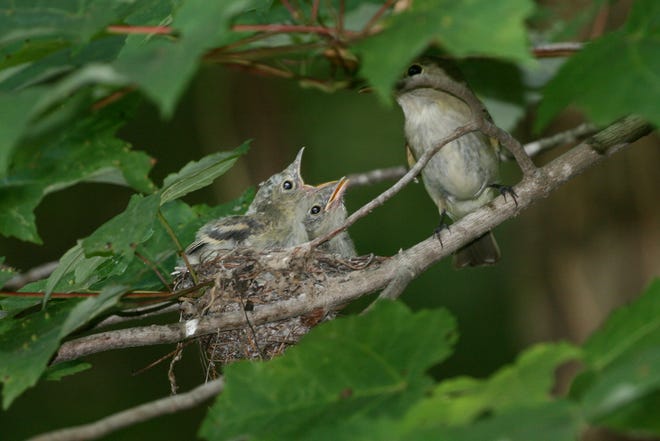Indiana hikers, backyard birders, farmers, and anyone else who sees sick or injured wildlife can contact their local rehabilitation clinics for help, but there are a few things to know before you pick up the phone: or an animal.
exist 59 Licensed Wildlife Rehabilitators in Indiana who work with the goal of helping sick or injured animals recover so they can be returned to the wild. A complete list, on the Department of Natural Resources website, has contact information for each local rehab center, so check there to find the one closest to you.
Here’s a quick list of things to consider when reporting tips according to local Indiana rehabbers.
Plus:Want to see some of the best wildlife in Indiana? Follow this expert advice and go west.
Plus:Avian flu hits Indiana’s third farm: Over 103,000 turkeys now die from the virus
Single babies cannot be abandoned
This tops many rehabilitators’ list of warnings, and the DNR also notes that apparently abandoned animals are likely still in adult care.
Adults may be collecting food and not return if a person is near the youth, says the DNR website. Human scent can alert predators that young prey may be nearby. It can also be detrimental to the reproductive cycle to remove the young from the nests, so it is best to watch from a distance and call a rehabilitator before attempting any type of rescue.

The US Fish and Wildlife Service heats 90% of wild-caught animals will not survive and recommends action if the following is observed:
- The animal is obviously injured, is bleeding, or has a broken bone.
- It is covered with fly eggs.
- He has been crying for more than a day
- He looks weak and is lying on his side.
- A pet or other animal attacked you
Let the professionals take the lead
The dietary needs of each animal can differ greatly, and professionals have specific training to know which foods are suitable for which animal.
WildCare Rehabilitators in Bloomington Note that no wild animals should drink cow’s milk as the lactose can be fatal to most baby animals. The rehabilitation’s website says much of the wildlife brought into the clinic has been harmed by improper captive care.
To increase the chances of survival, the specific housing, handling and dietary needs of each animal must be met.
Keep the animal where it is, if possible.
First, wildlife may have disease-carrying pests or parasites. It’s important to bring your pets inside and not use your bare hands if picking up a sick or injured animal is unavoidable.
Animals will not reject their young if they feel they have been tampered with by humans, but collecting wildlife is stressful for them and should be kept to a minimum. Call a rehabilitator before attempting to lift or move an animal.
If an animal must be handled, WildCare recommends keeping it in a warm, quiet area, preferably in a crate lined with towels, pillowcases, T-shirts, or tissue paper.
Cleaning center:What are the best places to see bald eagles in Indiana?
Plus:Songbird deaths: Cicadas? 5G? COVID-19? 9 questions answered about the mysterious fatal disease
Report unknown illness or death
While the DNR does not provide any rehabilitation services, it does collect and track information online about wildlife that appears to be sick or dead without apparent cause.

To keep humans, livestock, and wildlife safe, state officials need to be aware of any emerging disease outbreaks. The department tracks these through an online reporting tool:
The researchers are interested in recurrent deaths in the same location, individual deer with signs of chronic debilitating disease (wasting, staggering or poor standing, excessive salivation), individual deer with signs of epizootic hemorrhagic disease (death at or near loss of appetite and wariness, swelling around the head and neck, pink or bluish color of the mouth and tongue) and incidents involving endangered or threatened species.
Do not keep wildlife as pets
Wildlife is meant to be wild, and if a young animal becomes habituated to humans, it cannot be reintroduced into the wild. The animals are also active and independent and can become destructive as they age.
It is illegal in Indiana to maintain native wildlife without a permit for any reason. Most native species are protected by state and federal laws.
Karl Schneider is an environmental reporter for IndyStar. You can reach him at [email protected]. Follow him on Twitter @karlstartswithk
The IndyStar Environmental Reporting Project is made possible through the generous support of the nonprofit Nina Mason Pulliam Charitable Trust.
